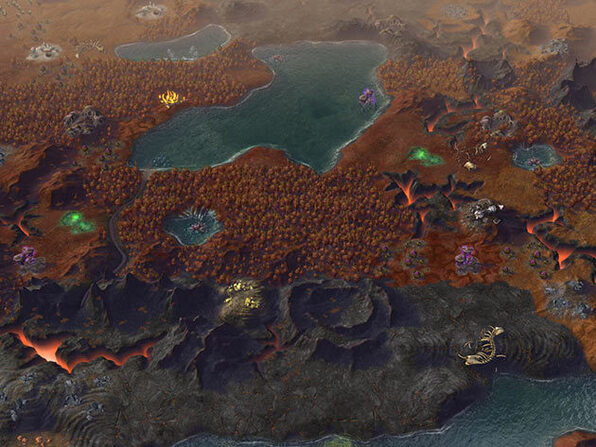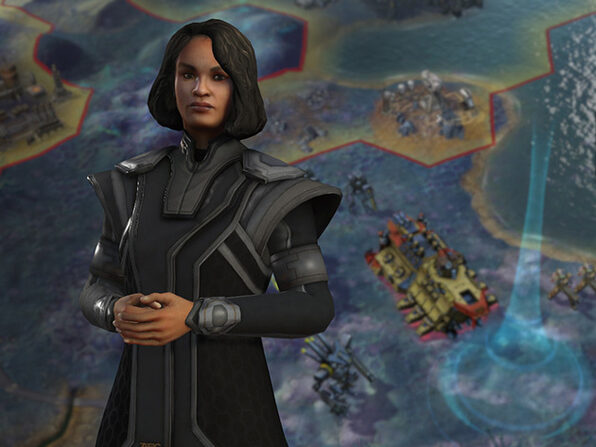

Domes and futuristic machinery don’t communicate function like a farm or windmill does. The map is pretty to look at (especially with the subtle depth of field effect that softly defocuses the edges of the screen) but tough to read at a glance, because terrain and improvements look nothing like those on Earth.

Finding my footing in Beyond Earth was tougher than it’s been in most Civs because, like most sci-fi games, it’s so alien and unfamiliar. Faction design is basically what we’re accustomed to from Civ 5, with the notable absence of faction-specific military or trade units. However, none of them has the recognition or implied personality of other Civ games’ historical leaders, and none have any memorable traits of their own.

The eight all-human faction choices, based on hypothetical future-Earth alliances like the Pan-Asian Cooperative and the Slavic Federation, are unexciting each has a small bonus to espionage or city growth or what have you, and you get to select from an extra menu of similar bonuses to layer on top of the cultural one (such as additional cash or culture generation), so there’s some decent customization there. A game of Beyond Earth begins with your spaceship landing and founding a colony, equipped with a minor starting bonus of your choosing that smartly removes the first few turns of tapping “next” until you build that first worker or soldier or basic building and allows you to get to the next decision.


 0 kommentar(er)
0 kommentar(er)
